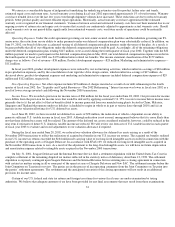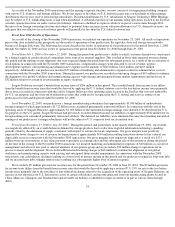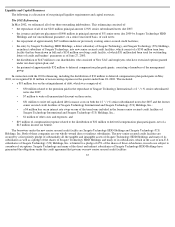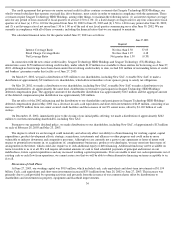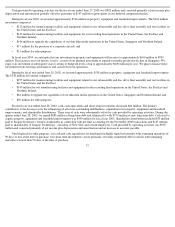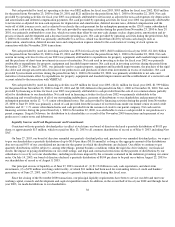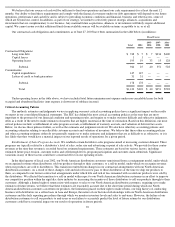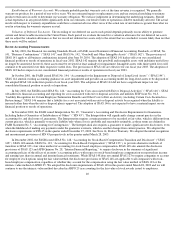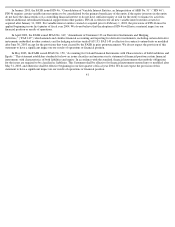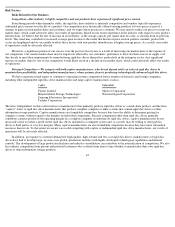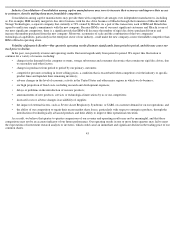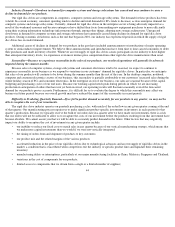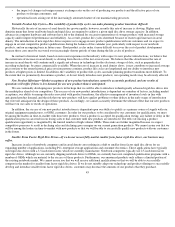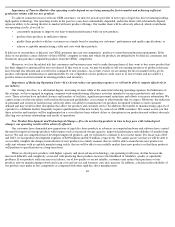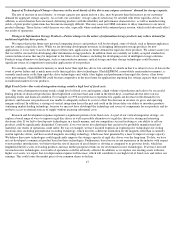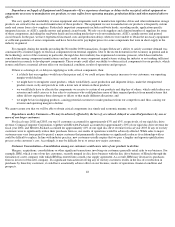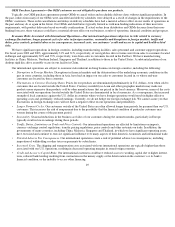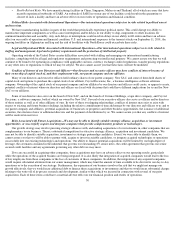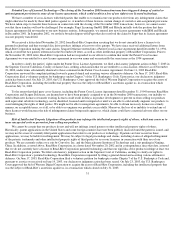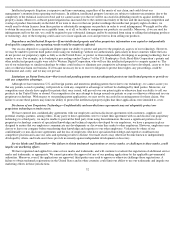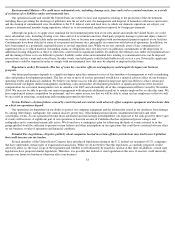Seagate 2002 Annual Report Download - page 48
Download and view the complete annual report
Please find page 48 of the 2002 Seagate annual report below. You can navigate through the pages in the report by either clicking on the pages listed below, or by using the keyword search tool below to find specific information within the annual report.
Industry Consolidation—Consolidation among captive manufacturers may serve to increase their resources and improve their access
to customers, thereby making them more formidable competitors.
Consolidation among captive manufacturers may provide them with competitive advantages over independent manufacturers, including
us. For example, IBM recently merged its disc drive business with the disc drive business of Hitachi through the formation of Hitachi Global
Storage Technologies, a separate company that currently is 70% owned by Hitachi. As a part of this transaction, each of IBM and Hitachi has
agreed to multi-year supply commitments with the new company. Because IBM is one of our most significant customers and Hitachi is one of
our most significant competitors, there is a significant risk that IBM will decrease the number of rigid disc drives purchased from us and
increase the number purchased from the new company. Moreover, economies of scale and the combination of the two companies’
technological capabilities, particularly in the enterprise sector of our industry, could make the new company a more formidable competitor than
IBM or Hitachi operating alone.
Volatility of Quarterly Results—Our quarterly operating results fluctuate significantly from period to period, and this may cause our
stock price to decline.
In the past, our quarterly revenue and operating results fluctuated significantly from period to period. We expect this fluctuation to
continue for a variety of reasons, including:
•
changes in the demand for the computer systems, storage subsystems and consumer electronics that contain our rigid disc drives, due
to seasonality and other factors;
•
changes in purchases from period to period by our primary customers;
•
competitive pressures resulting in lower selling prices, a condition that is exacerbated when competitors exit the industry or specific
product lines and liquidate their remaining inventory;
•
adverse changes in the level of economic activity in the United States and other major regions in which we do business;
•
our high proportion of fixed costs, including research and development expenses;
•
delays or problems in the introduction of our new products;
•
announcements of new products, services or technological innovations by us or our competitors;
•
increased costs or adverse changes in availability of supplies;
•
the impact of external factors, such as Severe Acute Respiratory Syndrome, or SARS, on customer demand or on our operations; and
As a result, we believe that quarter-to-quarter comparisons of our revenue and operating results may not be meaningful, and that these
comparisons may not be an accurate indicator of our future performance. Our operating results in one or more future quarters may fail to meet
the expectations of investment research analysts or investors, which could cause an immediate and significant decline in the trading price of our
common shares.
43
•
the ability of our competition to regain their recent market share losses, particularly with respect to enterprise products, through the
introduction of technologically advanced products and their ability to improve their operational execution.


